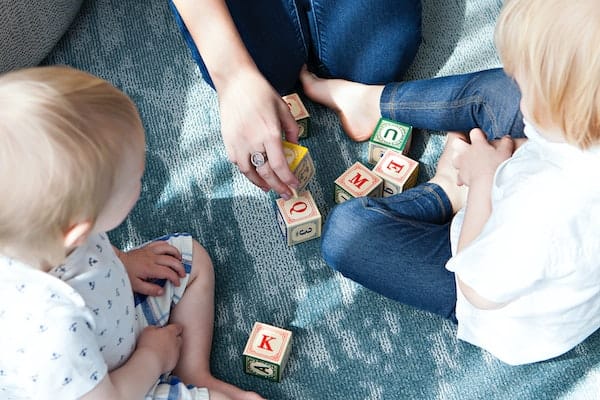Facts About Radon
What is Radon and where does it come from?
Radon is a tasteless, odorless and invisible radioactive gas that results from decaying uranium. Radon is measured in Becquerel’s/meter cubed (Bq/m3) scientifically, one Becquerel means one radioactive disintegration per second. When Radon is released from the ground into the outside air it mixes with the air so there is no concern, however when this happens inside an enclosed structure like homes, it can lead to very high levels which can become a health risk to your family.
Watch "CBC - The National" Video Watch "Mike Holmes on Radon" Video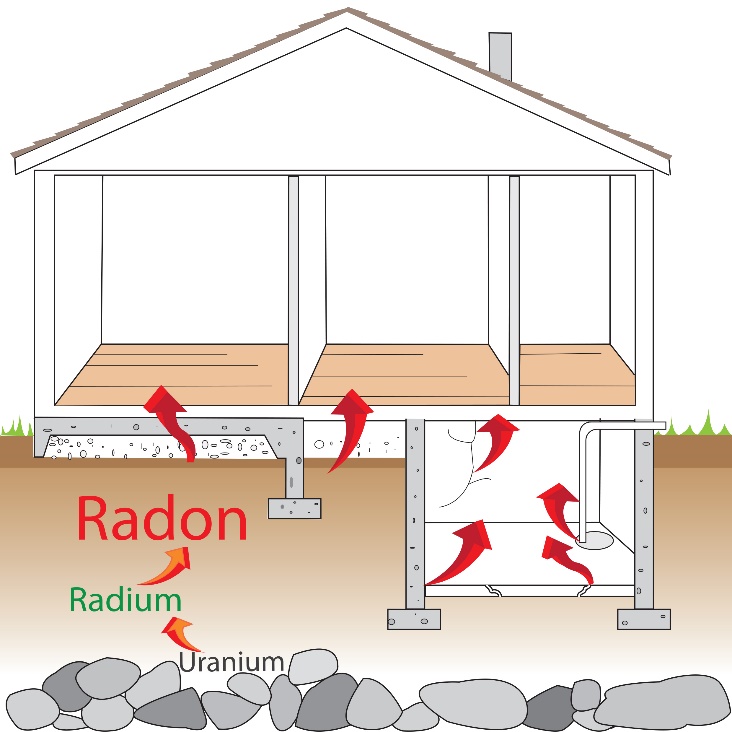
How does Radon enter my home?
Radon filters up from the ground and into the air. It can enter buildings through openings where the buildings contact the ground. Foundation cracks, drains, sump pumps. In the outdoors, radon is diluted to low levels. Inside buildings, however, radon can build up to harmful, concentrated levels. Radon is drawn into the house due to air pressure as the air pressure inside the home is generally lower compared to the soil underneath your home. Essentially your home is acting like a giant vacuum to suck the radon inside. Any home can have a Radon issue, new or old. The only way to know if you have a radon issue is to test for it.
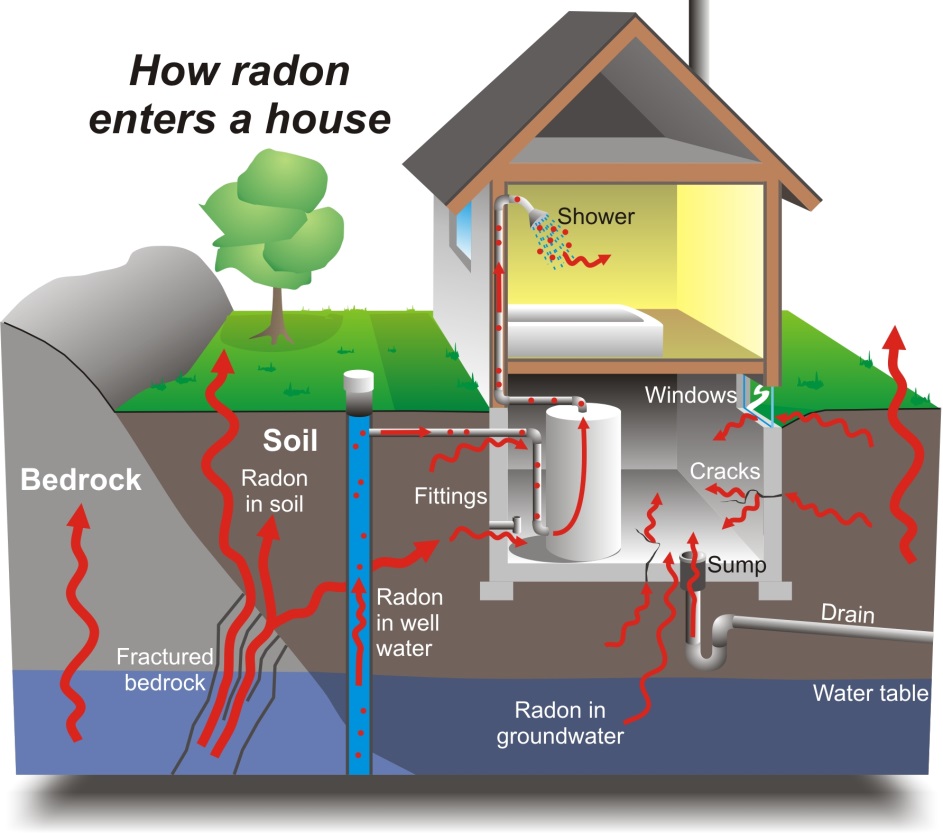
What are the Health Effects of Radon exposure?
Radon gas breaks down or decays to form radioactive elements that can be inhaled into the lungs. In the lungs, decay continues, creating radioactive particles that release small bursts of energy. This energy is absorbed by nearby lung tissue, damaging the lung cells. When cells are damaged, they have the potential to result in cancer when they reproduce.
Exposure to high levels of radon in indoor air results in an increased risk of developing lung cancer. The risk of cancer depends on the level of radon and how long a person is exposed to those levels. In fact, Radon is linked to 16% of lung cancer deaths. It is the leading cause of lung cancer in non-smokers, and the second leading cause of lung cancer after smoking.
Exposure to radon and tobacco used together can significantly increase your risk of lung cancer. For example, if you are a lifelong smoker, your risk of getting lung cancer is 1 in 10. If you add longterm exposure to a high level of radon, your risk becomes 1 in 3. On the other hand, if you are a non-smoker, your lifetime lung cancer risk at the same high radon level is 1 in 20. Breathing increased levels of radon increases a person’s chance of developing lung cancer.
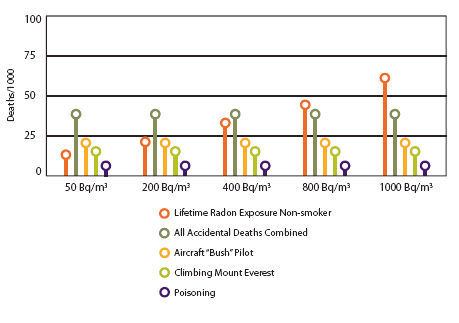
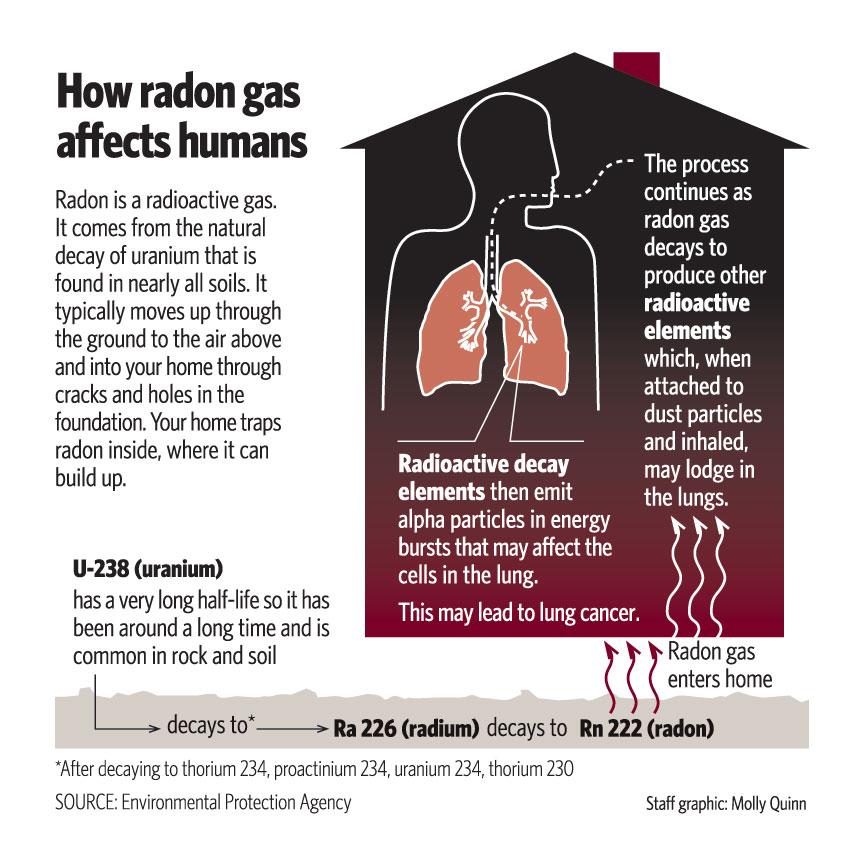
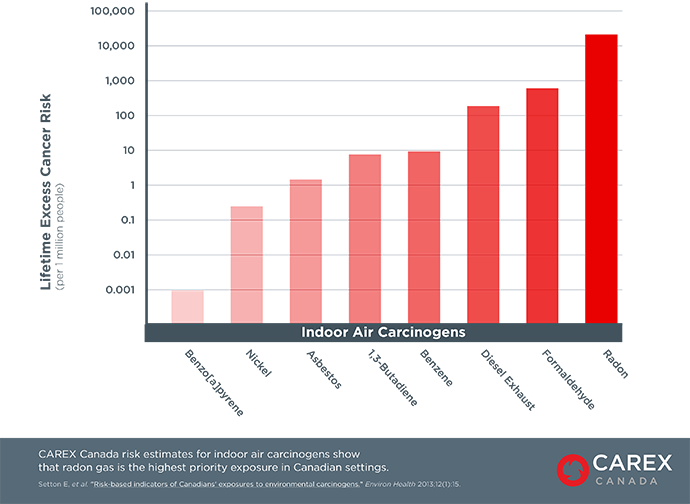
What levels of Radon should I expect in my home?
The current Canadian guideline for radon in indoor air for dwellings is 200 Becquerel’s per cubic meter (200 Bq/m3). Individual home owners may wish to reduce radon levels as much as they reasonably can, using methods they find affordable and practical. However, the level in a dwelling should not be above the new guideline.
The only way to know if you have Radon in your home is to test for it!
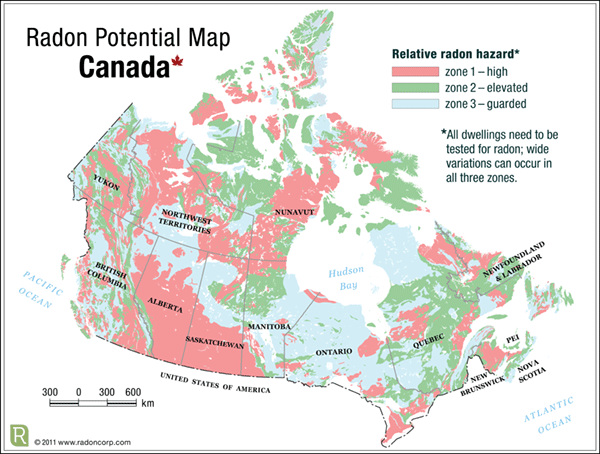
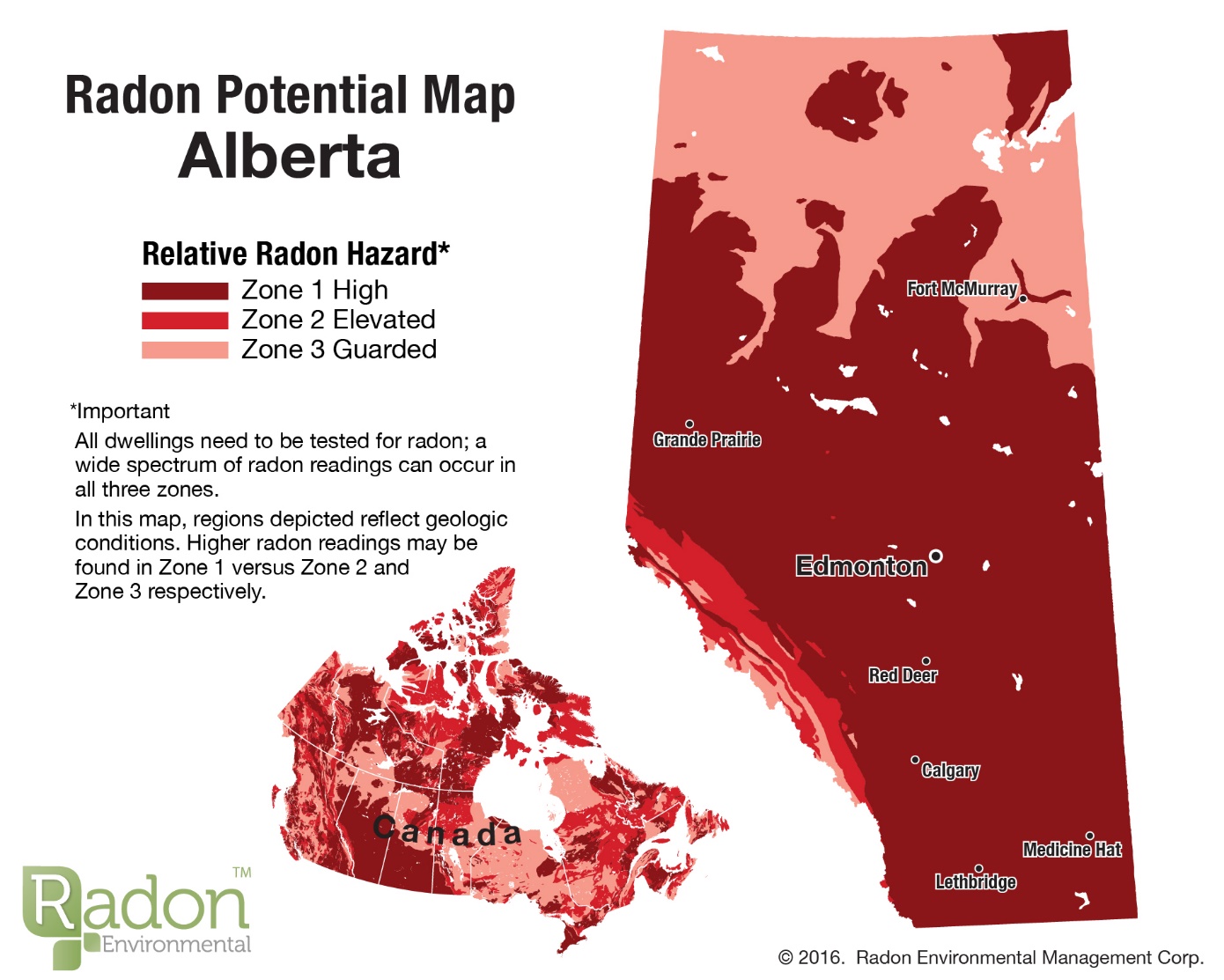
Radon Exposure and Children
Infants and children are particularly sensitive to the negative health effects of the alpha particle radiation emitted by radon gas, and special measures should be taken to reduce their exposure as much as possible. Children are still developing organs, rapidly growing tissues and cells are very vulnerable to DNA damage from radiation exposure. Children weigh less, and so their overall exposure is much greater compared to an adult. Children breathe faster. An infant or small child will respire 2-3 times faster than adults as they have little lungs and are often more active. Faster breathing means more radon exposure. Children have more life left. Radon exposure causes DNA damage and genetic mutations that may take 10-30 years before lung cancer is diagnosed. Early life radon exposure means a person is more likely to live long enough to get cancer from it.
